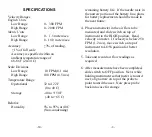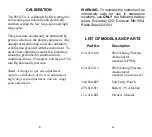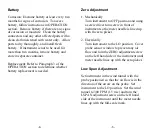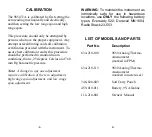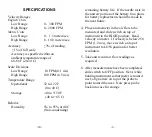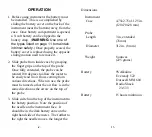
THEORY OF
OPERATION
Sensors
Two thermistors are used, positioned at the
end of the probe and exposed to the air stream
to be measured. One senses the ambient
temperature of the air stream. The other is
then heated by the circuit above ambient. As
air passes over this heated thermistor it
produces a cooling effect proportional to the
air flow (velocity) and a change in voltage
across the thermistor is created.
Control Circuit
The thermistors form part of a bridge circuit
which is used in conjunction with an
operational amplifier to create a current
proportional to the voltage change. This
current drives the meter.
The range switch changes the amplification
factor, allowing air velocity to be displayed on
either a low or high reading scale.
The switch also has a “BATT” position,
where a portion of the battery voltage is
substituted for the bridge output, giving an
indication of the voltage being provided by
the battery.
GENERAL DESCRIPTION
The Model 9850 Thermo-Anemometer is a
pocket-sized, battery operated, analog
readout, portable instrument capable of
measuring air velocities from 20 to 2000 FPM
(0.1 to 10 m/s) in two ranges. The instrument
is designed with a 3-inch retractable probe
such that the instrument fits conveniently in
its soft carrying pouch or can be carried in a
“shirt” pocket.
The instrument is powered up to fifteen hours
by a standard 9-volt battery which is easily
replaceable by snapping off the removable
battery cover from the case.
Applications include air velocity
measurements near grills and diffusers, in
fume hoods, in clean benches, and in all
applications where air movement is critical to
human safety or comfort.
-1-
-12-






